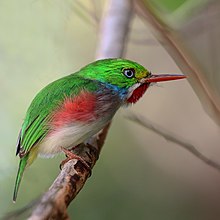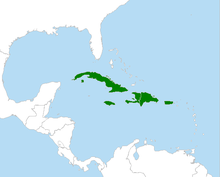
Kingfishers are a family, the Alcedinidae, of small to medium-sized, brightly colored birds in the order Coraciiformes. They have a cosmopolitan distribution, with most species found in the tropical regions of Africa, Asia, and Oceania, but also can be seen in Europe. They can be found in deep forests near calm ponds and small rivers. The family contains 116 species and is divided into three subfamilies and 19 genera. All kingfishers have large heads, long, sharp, pointed bills, short legs, and stubby tails. Most species have bright plumage with only small differences between the sexes. Most species are tropical in distribution, and a slight majority are found only in forests.

The Coraciiformes are a group of usually colourful birds including the kingfishers, the bee-eaters, the rollers, the motmots, and the todies. They generally have syndactyly, with three forward-pointing toes, though in many kingfishers one of these is missing. The members of this order are linked by their “slamming” behaviour, thrashing their prey onto surfaces to disarm or incapacitate them.

Coraciidae is a family of Old World birds, which are known as rollers because of the aerial acrobatics some of these birds perform during courtship or territorial flights. Rollers resemble crows in size and build, and share the colourful appearance of kingfishers and bee-eaters, blues and pinkish or cinnamon browns predominating. The two inner front toes are connected, but not the outer one.

The motmots or Momotidae are a family of birds in the order coraciiformes, which also includes the kingfishers, bee-eaters and rollers. All extant motmots are restricted to woodland or forests in the Neotropics, and the largest are in Central America. They have a colourful plumage and a relatively heavy bill. All except the tody motmot have relatively long tails that in some species have a distinctive racket-like tip.
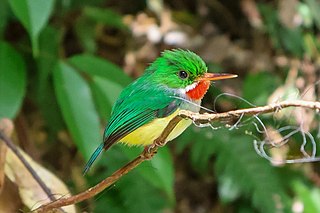
The Puerto Rican tody is a bird endemic to Puerto Rico. It is locally known in Spanish as "San Pedrito" and "medio peso".
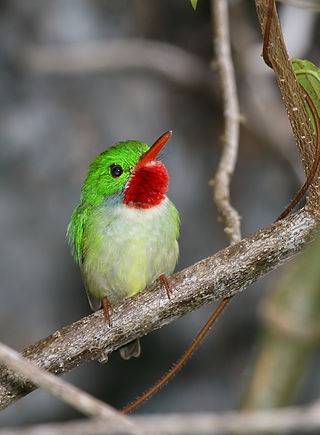
Todus is a genus of birds in the family Todidae, the todies, found in the Caribbean. It is the only extant genus within the family Todidae. The five species are small, near passerine birds of the forests of the Greater Antilles: Puerto Rico, Jamaica, and Cuba, with adjacent islands, have one species each, and Hispaniola has two, the broad-billed tody in the lowlands and the narrow-billed tody in the highlands.
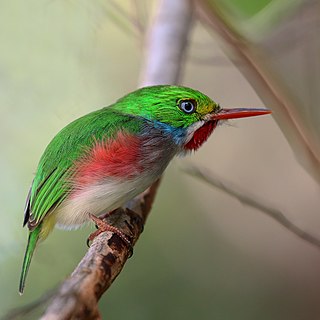
The Cuban tody is a bird species in the family Todidae that is restricted to Cuba and the adjacent islands.

The Jamaican tody is a species of bird in the genus Todus endemic to Jamaica. Local names for the Jamaican tody include rasta bird, robin and robin redbreast.

Momotus is a small genus of the motmots, a family of near passerine birds found in forest and woodland of the Neotropics. They have a colourful plumage, which is green on the back becoming blue on the flight feathers and the long tails. The barbs near the ends of the two longest central tail feathers fall off, leaving a length of bare shaft so that tails appear racket-shaped.
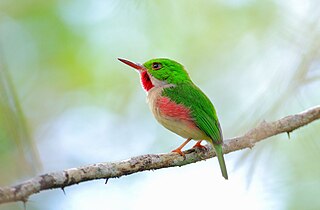
The broad-billed tody is a species of bird in the family Todidae, and one of two Todus species found on Hispaniola, along with the narrow-billed tody. They are small insectivorous birds, characterized by their bright green feathers, pink flanks and red throats.

The broad-billed motmot is a fairly common Central and South American bird of the Momotidae family. They are nonmigratory, sedentary birds that are most frequently seen in singles or pairs. There exist six subspecies of the broad-billed motmot.

The tody motmot is a species of near-passerine bird in the motmot family Momotidae. It is the only species placed in the genus Hylomanes. It is found in Belize, Colombia, Costa Rica, El Salvador, Guatemala, Honduras, Mexico, Nicaragua, and Panama.

The forest kingfisher, also known as Macleay's or the blue kingfisher, is a species of kingfisher in the subfamily Halcyoninae, also known as tree kingfishers. It is a predominantly blue and white bird. It is found in Indonesia, New Guinea and coastal eastern and Northern Australia. Like many other kingfishers, it hunts invertebrates, small frogs, and lizards.

The narrow-billed tody is a species of bird in the family Todidae. It is one of two Todus species endemic to Hispaniola, a Caribbean island shared by the Dominican Republic and Haiti.
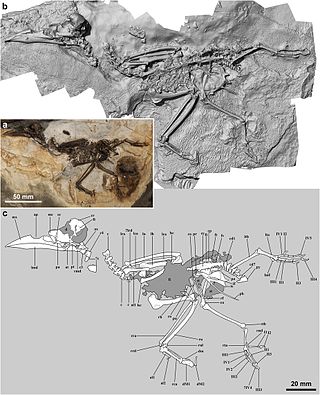
Septencoracias is an extinct genus of bird related to modern rollers and other Coraciiformes such as kingfishers, bee-eaters, motmots, and todies. It contains one species, Septencoracias morsensis. It was found in the Fur Formation of Denmark, dating back to the Ypresian of the Lower Eocene Epoch, about 54 million years ago. Septencoracias is one of the earliest known members of Coraciiformes, lending insight into the earliest radiation of this group.
Palaeotodus is an extinct genus of todies in the family Todidae. The genus has at least three species known from fossils found in west-central Europe and western North America.

Eocoracias is an extinct genus of bird related to modern rollers and other Coraciiformes such as kingfishers, bee-eaters, motmots, and todies. It contains one species, Eocoracias brachyptera, and it lived approximately 47 million years ago based on dating of the fossil site. It is known for a specimen having preserved non-iridescent structural coloration on its feathers, previously unknown in fossil birds. Fossils have been found at the Messel Pit in Germany.
